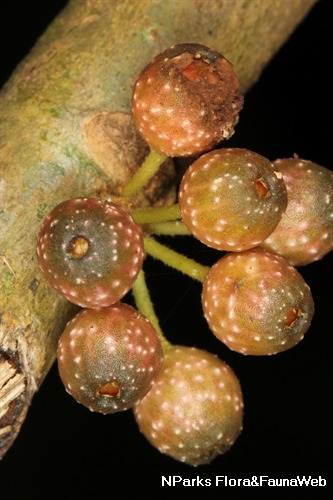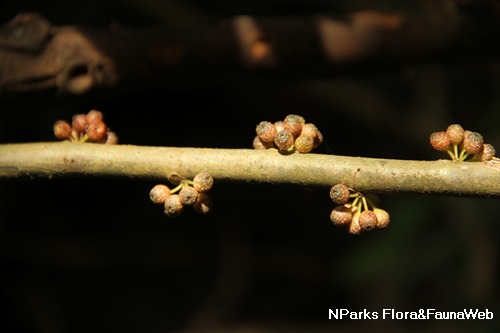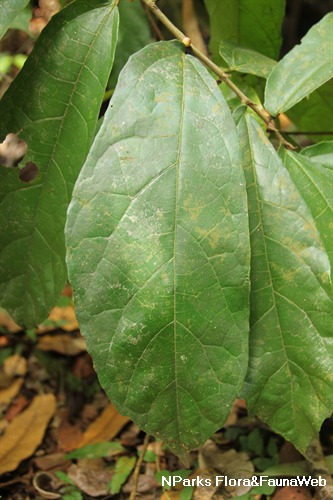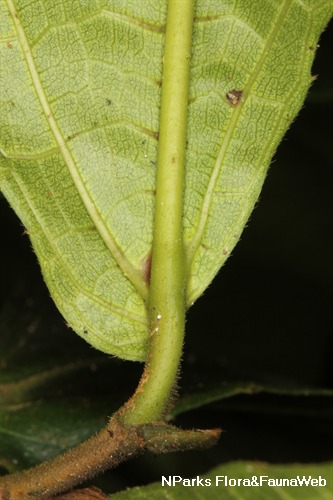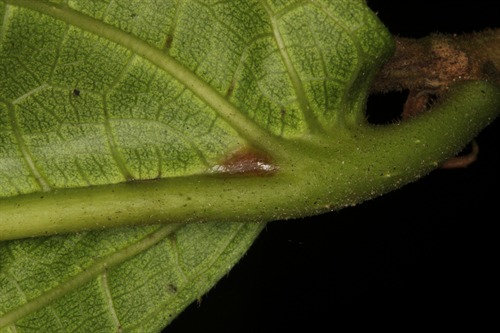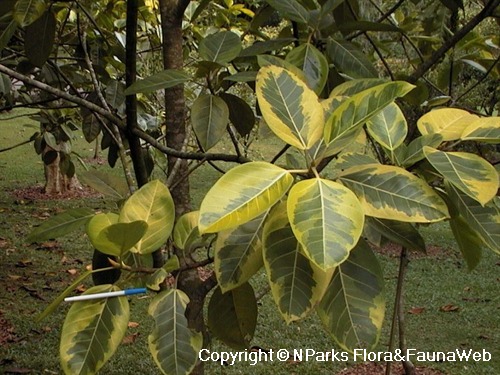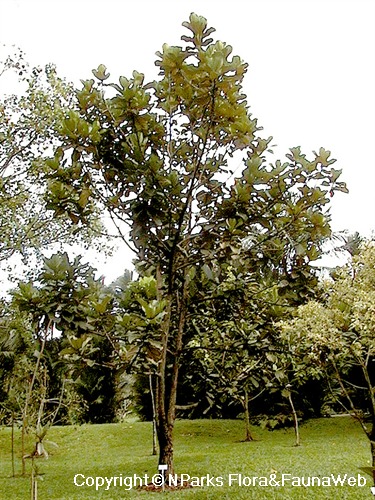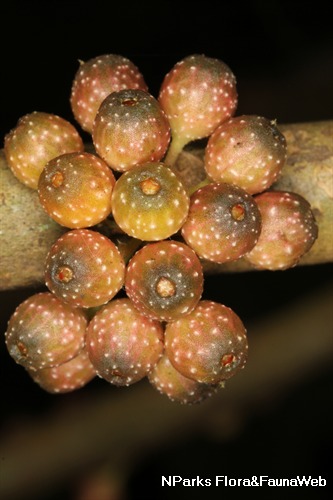
Back
Ficus pisifera Wall. ex Voigt
| Family Name: | Moraceae |
| Synonyms: | Ficus obscura (Miq.) Corner var. borneensis |
Name
Classifications and Characteristics
| Plant Division | Angiosperms (Flowering Seed Plants) |
|---|---|
| Plant Growth Form | Tree (Medium (16m-30m)) |
| Lifespan (in Singapore) | Perennial |
| Mode of Nutrition | Autotrophic |
| Plant Shape | Irregular |
| Maximum Height | 30 m |
Biogeography
| Native Distribution | Thailand, Peninsular Malaysia, and Singapore |
|---|---|
| Native Habitat | Terrestrial (Primary Rainforest, Freshwater Swamp Forest) |
| Preferred Climate Zone | Tropical |
| Local Conservation Status | Native to Singapore (Critically Endangered (CR)) |
Description and Ethnobotany
| Growth Form | It is an epiphytic or strangling fig up to 30 m tall. |
|---|---|
| Foliage | Its stalked leaves have papery blades that are narrowly drop-shaped to elliptic, and up to 17.5 by 6 cm. |
| Flowers | The plant is dioecious with each plant bearing male or female flowers. The flowers are tiny and develop within the syconium (fig). |
| Fruit | Its short-stalked syconia (figs) are round, 15–22 mm wide, hairy, and develop singly or in pairs on leafy twigs, or in clusters on minute short-shoots. They ripen from white to pink, yellow, orange and dark red when mature. |
| Habitat | It grows in lowland forests. It occurs locally around Nee Soon Swamp Forest. |
| Associated Fauna | Its flowers are pollinated by fig wasps. The figs are eaten by birds and small mammals. |
| Cultivation | It can be propagated by seed or stem cuttings. |
| Etymology | Latin ficus, fig; Latin obscura, dark, obscure, the reference to which is unknown; Latin borneensis, of Borneo, referring to one locality in the natural distribution of this variety |
Landscaping Features
| Landscaping | It is suitable for growing in parks for its attractive leaves and figs that also provide food for birds and small mammals. |
|---|---|
| Desirable Plant Features | Ornamental Foliage, Ornamental Fruits |
| Landscape Uses | Parks & Gardens |
Fauna, Pollination and Dispersal
| Fauna Pollination Dispersal Associated Fauna | Bird-Attracting |
|---|---|
| Pollination Method(s) | Biotic (Fauna) |
| Seed or Spore Dispersal | Biotic (Fauna) |
Plant Care and Propagation
| Light Preference | Full Sun, Semi-Shade |
|---|---|
| Water Preference | Moderate Water |
| Plant Growth Rate | Moderate |
| Rootzone Tolerance | Moist Soils, Well-Drained Soils, Fertile Loamy Soils |
| Propagation Method | Seed, Stem Cutting |
Foliar
| Foliage Retention | Evergreen |
|---|---|
| Mature Foliage Colour(s) | Green |
| Mature Foliage Texture(s) | Papery |
| Foliar Type | Simple / Unifoliate |
| Foliar Arrangement Along Stem | Alternate |
| Foliar Attachment to Stem | Petiolate |
| Foliar Shape(s) | Non-Palm Foliage (Obovate, Elliptical) |
| Foliar Venation | Pinnate / Net |
| Foliar Margin | Serrate / Toothed |
Floral (Angiosperm)
| Flower & Plant Sexuality | Unisexual Flowers , Monoecious |
| Flower Grouping | Cluster / Inflorescence |
|---|
| Flower Location | Cauliflorous |
| Inflorescence Type | Syconium |
Fruit, Seed and Spore
| Mature Fruit Colour(s) | Black, Red |
|---|---|
| Fruit Classification | Multiple Fruit |
| Fruit Type | Fleshy Fruit , Accessory / False Fruit (Pseudocarp) |
Image Repository
Others
| Master ID | 31960 |
|---|---|
| Species ID | 6362 |
| Flora Disclaimer | The information in this website has been compiled from reliable sources, such as reference works on medicinal plants. It is not a substitute for medical advice or treatment and NParks does not purport to provide any medical advice. Readers should always consult his/her physician before using or consuming a plant for medicinal purposes. |

